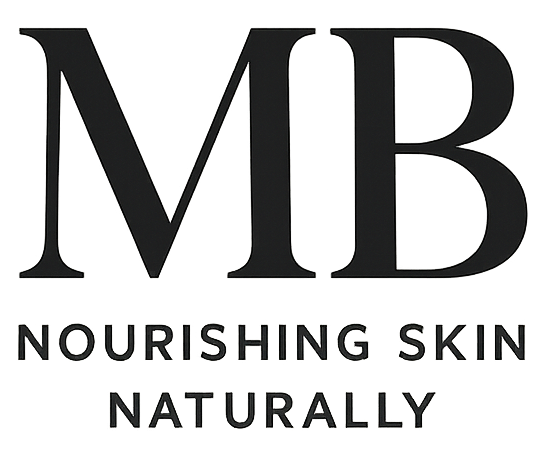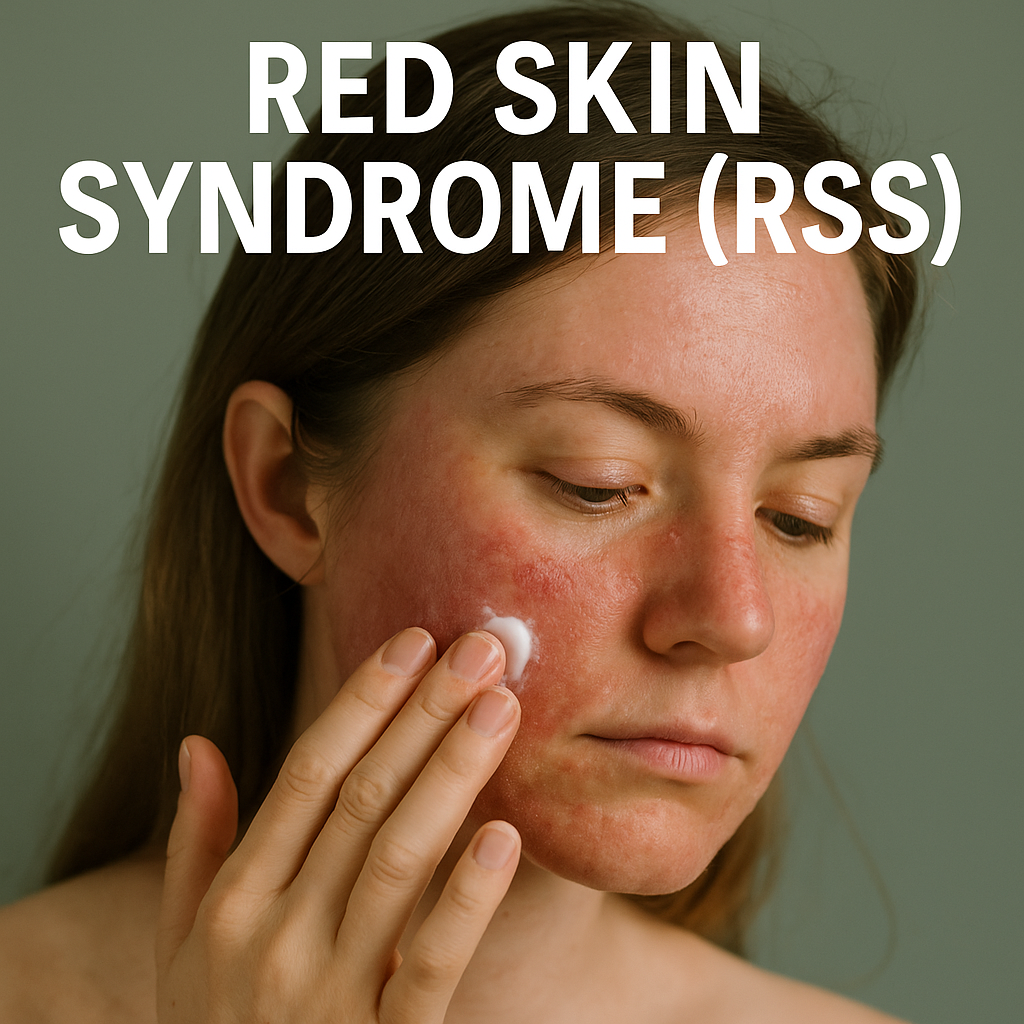Introduction
If you’ve ever experienced burning, itching, or sunburn-red skin after stopping topical steroids — you’re not alone. RSS, or Red Skin Syndrome, is something most people don’t hear about until they’re knee-deep in it.

It doesn’t always happen right away. Some people feel the symptoms creep in while they’re still using the cream. For others, it hits days or even weeks after stopping. It usually starts where the steroid was applied... but it doesn’t always stay there. Our co-founder, Kristen, knows this firsthand. Her flare began on the hands and body — and eventually spread to her face, arms, and legs.
Signs You Might Be In RSS (While Still Using Steroids)
- Redness even where you didn’t apply the cream
- Stinging, burning, or crawling sensations
- An eczemalike rash that doesn’t improve anymore
- Needing stronger doses for the same effect
Signs After You Stop Using Steroids
Depending on your skin history, you might experience one of the two major types:
- Erythematoedematous: Common in people with eczema — brings redness, burning, swelling, and super sensitive skin, often starting within 1–2 weeks.
- Papulopustular: More common if you used steroids for acne — shows up as angry bumps, pustules, redness, and swelling.
Here’s what else you might notice:
- Red, raw, sunburned skin
- Flaking or oozing
- Blisters and swelling
- Sensitivity to temperature
- Nerve pain, fatigue, anxiety
- Hair loss or swollen lymph nodes
- Trouble sleeping or appetite changes
TSA vs TSW vs RSS — What’s What?
Let’s break it down simply:
- TSA: Topical Steroid Addiction — your skin has gotten used to steroids and now needs more to work.
- TSW: Topical Steroid Withdrawal — symptoms pop up when you stop using them.
- RSS: Red Skin Syndrome — the visible skin condition caused by long-term steroid use and withdrawal.
Who’s More Likely to Develop RSS?
- Anyone using steroids daily over a long time
- Using high-potency steroids
- Applying steroids to sensitive areas like the face
- Women and those who flush easily
- Even caregivers who apply it on others (and forget to wash hands!)
So... How Is RSS Diagnosed?
Short answer: it often isn’t. Many doctors will call it eczema and prescribe more steroids. But if you’re reading this and it sounds way too familiar — it might be RSS. If you're unsure, reach out to us on via our chat bubble at the bottom right. We’re not doctors, but we’ve walked this path.
How Long Does It Last?
This depends. For some, it clears in weeks. For others, it can take months or more than a year. Kristen’s own healing took 8 months — but that light at the end? It came. The day her skin stopped peeling and the redness faded... was unforgettable. And yes, she eventually got to enjoy some of her old “trigger” foods again (in moderation, of course).
One thing that didn’t help? Wet wraps. In her case, it made things worse. Every skin story is different — and that’s okay.
Can You Prevent RSS?
Best prevention? Don’t rely on steroids long-term. If you must use them, ask your doctor how little and how briefly you can get away with. A pea-sized amount can go a long way — don’t be afraid to ask for a visual!
Not all doctors are trained in skin, especially pediatricians or GPs. If something feels off, push for a referral to a dermatologist who understands TSW.
How Mummybrand Supports RSS & TSW Skin
We don’t promise overnight fixes. But we do promise clean, comforting formulas that respect your skin’s healing phase.
- Handmade fresh every week — no preservatives, no gimmicks
- Waterless & oil-rich — because your barrier needs rebuilding, not dilution
- Scent-free and baby-safe — because fragility deserves gentleness
Whether you’re in month 1 or month 10 of healing, you’re not alone. Your skin has memory, and so do we. We’re here to walk with you — no filler, no fluff.
Click here to get started with our Hyper Sensitive Starter Pack →
Mummybrand — Made Fresh. Made for Healing.


